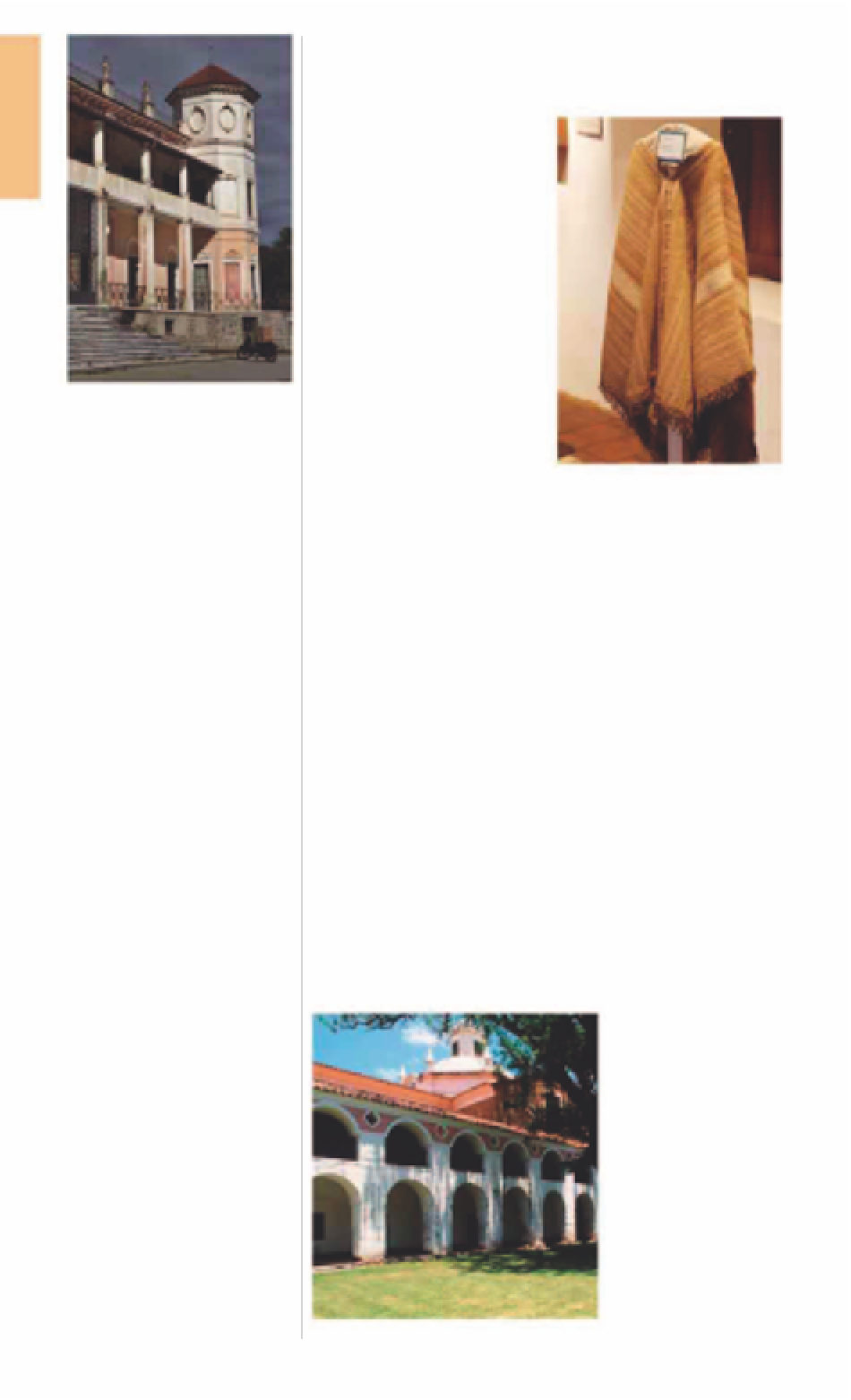Travel Reference
In-Depth Information
7
Jesús María
Road map
C2. 32 miles (51 km) N of
Córdoba.
*
21,000.
@
n
Jesús
María, Acmafuerte 451, (03525) 443-
773.
_
Fiesta Nacional de Doma y
Folklore (Jan).
8
Santa Catalina
See pp190-91.
Founded in the 16th century,
the sleepy market town of Jesús
María was once an important
link in the chain of agricultural
estancias built by the Jesuits to
feed and fund the University
of Córdoba. Most of the town's
historical buildings date from
the mid-1700s. In 1946 the old
church, convent,
bodega,
and
residences were converted into
Museo Jesuítico Nacional de
Jesús María
. The museum
contains archaeological finds
and sacred relics. The famous
Jesuit winery can also be visited.
It was here, so the story goes,
that the first colonial wine
served to the Spanish royal
family was produced.
In January the town's
population temporarily swells
to over 200,000 when it plays
host to one of Argentina's
most popular gaucho and folk
festivals, the Fiesta Nacional de
Doma y Folklore. Lasting ten
days, this fiesta combines
extremely daring feats of horse-
manship with improvised folk
singing that doubles as a com-
mentary on the rodeo action.
The faded exterior of the once-exclusive
Hotel Edén at La Falda
6
La Cumbre
Road map
B2. 59 miles (95 km) N of
Córdoba.
*
7,000.
@
n
Ave
Caraffa 300, (03548) 452-966.
∑
alacumbre.com
A gaucho textile display at Museo Folklórico
in La Rioja
9
La Rioja
Road map
B2. 290 miles (467 km) NW
of Córdoba.
*
150,000.
~
@
n
La
Rioja, Yrigoyen 91, (0800) 999-5300.
∑
municipiolarioja.gov.ar
The name La Cumbre (The
Summit) was given to this town
because it was the last and
highest stop on the old British-
built railroad line that began
from Córdoba city. The trains
stopped chuffing up the hill a
long time ago, but La Cumbre's
timbered mock-Tudor cottages,
lovely manicured lawns, and the
famous golf club still testify to
the long-standing Anglo-Saxon
presence. La Cumbre is a laid-
back town known for its trout
fishing spots and horseback
riding. It has also become
synonymous with adventure
sports such as hang gliding
and paragliding. Competitions
are held here annually in March.
Some of the best views of the
surrounding Punilla Valley can
be had from the climb up to
the Cristo Redentor statue on
Cerro Viarapa.
Located at the foot of the
granite Velasco Sierras, La Rioja
is the capital city of the
namesake province. Founded
in 1591 by Juan Ramírez de
Velasco, it has been struck
regularly by major earthquakes
over the intervening centuries,
the most destructive of which
was in 1894. The city was an
unremarkable agricultural
outpost until the 1970s, when
industrialization sparked a
population surge. Although a
pleasant city to visit most of the
year, it is uncomfortable during
the summer months when
temperatures regularly
exceed 40° C (104° F).
The best time to visit is
in spring, when the
climate is relatively cool
and the parched air is
perfumed by the
multitude of blossoms
on the jacaranda and
orange trees. Due to
these blooms, La Rioja
has often been referred
to as La Cuidad de
los Naranjos
(the
City of Oranges).
Around Plaza 25 de
Mayo, the city's main
E
Museo Jesuítico Nacional de
Jesús María
Pedro de Oñate s/n.
Te l
(03525) 420-
126.
Open
8am-7pm Tue-Fri, 10am-
noon, 2-6pm Sat & Sun (Oct-Mar:
3-7pm).
&
Tue free.
8
on request.
∑
estanciajesusmaria.org
Environs
Just 8 miles (13 km) south
of La Cumbre,
La Falda
is a
larger town and another good
base for outdoor pursuits.
Visitors can tour the interiors
of the town's once exclusive
Hotel Edén, which closed in
the 1960s; in its heyday it
welcomed royalty, presidents,
and a former patents clerk
named Albert Einstein.
The Museo Jesuítico Nacional de Jesús María
For hotels and restaurants see pp278-83 and pp288-99




































